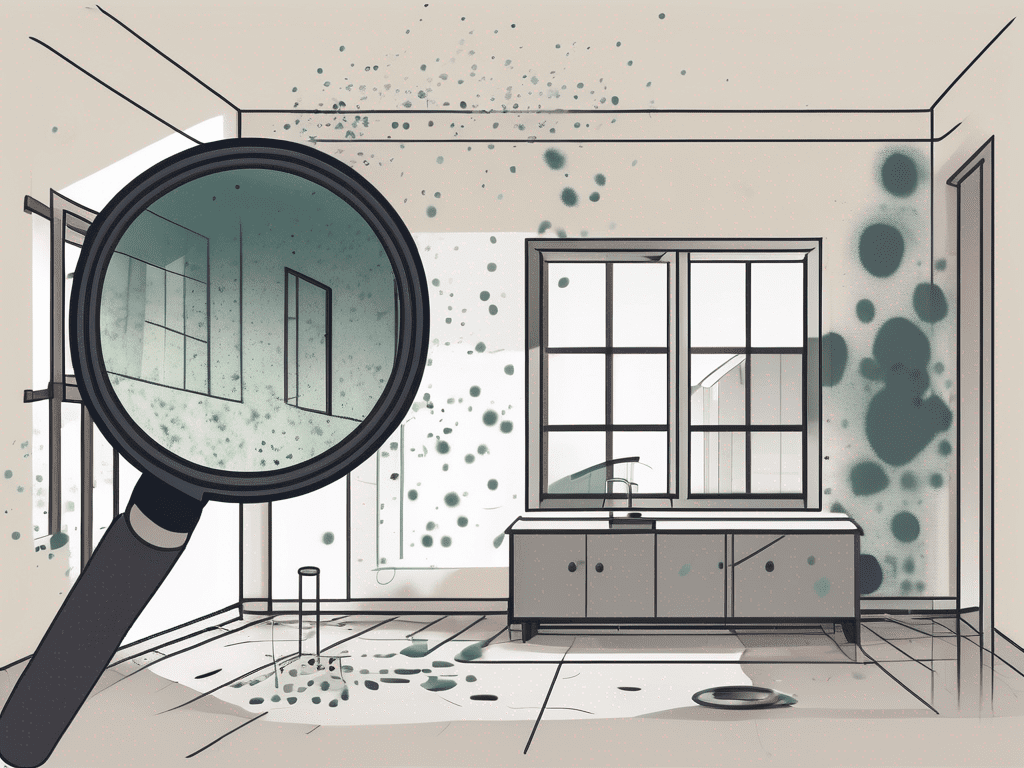Air pollution is a scary notion with serious health consequences. That’s why it’s understandable that more and more people are interested in understanding how exactly pollutants impact indoor living spaces. And even more so–how to reduce exposure in the one place you have control over, your home. As a (somewhat) more well-known air pollution subject, many wonder if and how criteria pollutants impact IAQ. And as a whole, if and how outdoor sources become indoor air problems. Let’s find out.
What Are Criteria Air Pollutants?
The Clean Air Act, passed in 1970, is a federal environmental law currently in effect with sweeping outdoor air quality regulations. Part of the legislation gives the Environmental Protection Agency (EPA) authority to regulate emissions from stationary and mobile sources. One of the ways the EPA does this is by setting National Ambient Air Quality Standards or NAAQS. These are the maximum allowable ambient air levels for six specific pollutants. Those six pollutants are known as criteria pollutants.
Why the name criteria pollutants? The chosen permissible ambient air levels stem from science-based guidelines or criteria regarding human health and the environment. Criteria pollutants are widespread, found throughout the country and even the world. They also originate from multiple emission sources.
Every five years, the EPA reviews the NAAQS with the possibility of revising permissible levels. All six pollutants were most recently updated in the 2010s. Enforcing the standards then falls onto the states. The EPA tasks states and tribes with the responsibility of developing state implementation plans (SIPs).
The final important piece to understand criteria pollutants are that there are two types of NAAQS. Primary standards protect public health–limits based solely on human health. Secondary standards protect public welfare, meaning environmental concerns.
The Big Six
The six criteria pollutants are: ozone, particulate matter, carbon monoxide, nitrogen dioxide, sulfur dioxide and lead. Again, these six air contaminants are widespread throughout the country and originate from a multitude of sources.
Ozone
Ozone (O3) also known as ground-level ozone forms when sunlight comes into contact with either volatile organic compounds (VOCs) or nitrogen oxides (another criteria pollutant!) in the air. Not to be confused with the ozone layer that protects us from the sun, ground-level ozone is a different compound with serious potential health risks. Ozone levels are often worse in the summer when sunlight is most direct.
- Health Concerns: lung inflammation, damaged lung function, chest pain, coughing, wheezing, congestion, aggravated existing lung conditions and/or symptoms
- Sources: industrial facilities, exhaust from vehicles and mobile sources, chemical solvents
- Possible Names: ozone, ground-level ozone, smog
Particulate Matter
This pollutant is a mix of solid and liquid particles in the air, including organic and inorganic material. Particulate matter varies widely in both size and composition. It is often simply referred to as PM10 or PM2.5, depending on size. PM2.5 is the smaller, or finer particle. Smaller particles are worse health-wise because they can travel deeper into the lungs.
- Health Concerns: respiratory symptoms and conditions, aggravated asthma symptoms, heart and lung diseases and increased risk of death
- Sources: industrial processes, construction, demolition, smoke from wildfires or burning materials and resuspended dust
- Possible Names: particulate matter, particle pollution, soot, PM10, PM2.5
Carbon Monoxide
Carbon monoxide is a gas formed primarily by fossil fuel combustion. The top CO source is vehicles. That means carbon monoxide levels are worse in high-traffic areas.
- Health Concerns: headaches, fatigue, dizziness, nausea or vomiting, shortness of breath and death with intense exposure
- Sources: vehicle emissions, non-road equipment, wildfires
Nitrogen Dioxide
Nitrogen dioxide (NO2) actually refers to a group of gases–nitrogen oxides. Pollution from theses gases mainly originate from vehicle and non-road equipment emissions.
- Health Concerns: respiratory conditions and symptoms
- Sources: vehicle and non-road equipment emissions
- Possible Names: nitrogen dioxide, nitrogen oxides
Sulfur Dioxide
Similar to nitrogen dioxide, sulfur dioxide (SO2) is one in a group of sulfur oxides represented by the criteria pollutant. This group of gases mainly stems from industrial processes and causes similar respiratory health risks.
- Health Concerns: respiratory system damage, chest pain, nose and throat irritation, coughing, wheezing, shortness of breath
- Sources: industrial processes, industrial facilities, power plants, sulfur-based fossil fuel combustion
- Possible Names: sulfur dioxide, sulfur oxides
Lead
Lead is perhaps a more common health concern and air pollutant. It exists naturally in soil and rock, but becomes a harmful air contaminant when released from the ground and into the surrounding environment. Multiple human activities and industrial processes cause this. In the past, gasoline was lead-based and vehicle emissions were the top source. Lead exposure allows the pollutant to enter the bloodstream.
- Health Concerns: irritability, fatigue, headache
- Sources: industrial processes
Do Criteria Pollutants Impact IAQ?
Criteria pollutants absolutely impact indoor air quality. Even though they are regulated nationwide, originate from outdoor sources and are considered outdoor pollutants, criteria pollutants can and do enter indoor environments. And when you consider the amount of time spent inside (90% according to the EPA!), exposure to these six pollutants is actually worse indoors compared to out.
Many studies show a direct relationship between outdoor and indoor air. Specifically, that outdoor air quality or the surrounding outdoor environment impacts indoor air quality. Going back to NAAQS and state implementation of ambient air levels, there are still numerous counties that exceed one or multiple set criteria pollutant levels. Even though states are required to submit and enforce attainable and source-specific SIPs, they do not always succeed. These are non-attainment areas. Exposure potential and risks can be higher for the people that live in these areas.
Understanding Indoor Exposure to Outdoor Pollutants
There are a couple key factors that impact how outdoor pollutants like the six criteria pollutants impact IAQ.
Ventilation
One of our expert’s favorite sayings is dilution is the solution to pollution. It’s also a helpful saying to better understand indoor pollution. The length of time pollutants remain in your living and working spaces, regardless of origin, depends largely on air circulation, or the air exchange rate.
Healthy homes and healthy indoor spaces have higher air exchange rates. That’s the critical dilution part! The faster air circulates, the quicker indoor and outdoor air exchanges, the better. Higher turnover results in less pollution indoors. There’s another way to examine this. While lower air exchange rates mean pollutants originating from outdoor sources move indoors slower (seemingly a good thing), it also means eliminating the pollutants already indoors also happens at a slower rate. IAQ solutions like mechanical ventilation help improve indoor circulation.
Construction
Airtight is a modern building method or goal for the purpose of improved energy-efficiency. It means constructing sealed homes and buildings, limiting air leakage and natural ventilation. While it has its pros, it limits indoor air exchange. And thus, airtight homes without additional ventilation measures increase the likelihood of indoor pollution exposure. Whether or not your space is airtight depends on the age of the home and renovations.
Pollutant Specific Factors
A final factor that further complicates indoor exposure to outdoor pollutants are envelope penetration factor and indoor loss rate. To avoid getting too technical, let’s examine a specific 2012 study of ambient ozone pollution entering residential spaces. The study concluded that a majority of ozone exposure occurs indoors. It cited wood furniture and wood materials, airtightness and the age of the space as factors that impacted the penetration factor of ozone. How much outdoor ground-level ozone entered the home dependent on these variables.
The takeaway: how much of an outdoor contaminant or criteria pollutant enters your indoor space depends on multiple factors, but it clearly is possible. Outdoor air impacts indoor air. It’s yet another reason to care about criteria pollutant levels in your region.
How Do Criteria Pollutants Compare to Other Pollutants?
In addition to the big six criteria pollutants, the EPA also recognizes 180+ hazardous air pollutants. These air toxics are either known carcinogens or have the potential to cause cancer and other serious health effects. And in addition to numerous outdoor sources, there are countless indoor air pollution sources that impact your space’s IAQ as well. But how do they all compare?
Even with different sources and as different pollutants, the health risks are fairly consistent. Air pollution impacts both physical and mental health with a particular focus on the respiratory and cardiovascular systems. Another similarity is that the available indoor air quality control options are the same, regardless of pollutant origin. It comes down to purification, ventilation, filtration, humidity control and source control. The bottom line is–actively intervening in your home and prioritizing indoor air quality addresses air pollution risks.
The main difference between indoor and outdoor sources is regulation. Indoor air quality has no overarching regulatory body or available standards. Instead, IAQ lies mainly in suggestions and recommendations. And while the EPA acknowledges air toxics, there are no set maximum ambient air levels. That’s where criteria pollutants diverge. There are clear measurable national standards for criteria pollutants.
Taking Control of IAQ
Hopefully understanding the differences between indoor and outdoor air pollution sources, what criteria pollutants are and how they can impact your indoor space is a helpful step to creating a healthier home. Awareness leads to change which in turn creates a better indoor environment.






